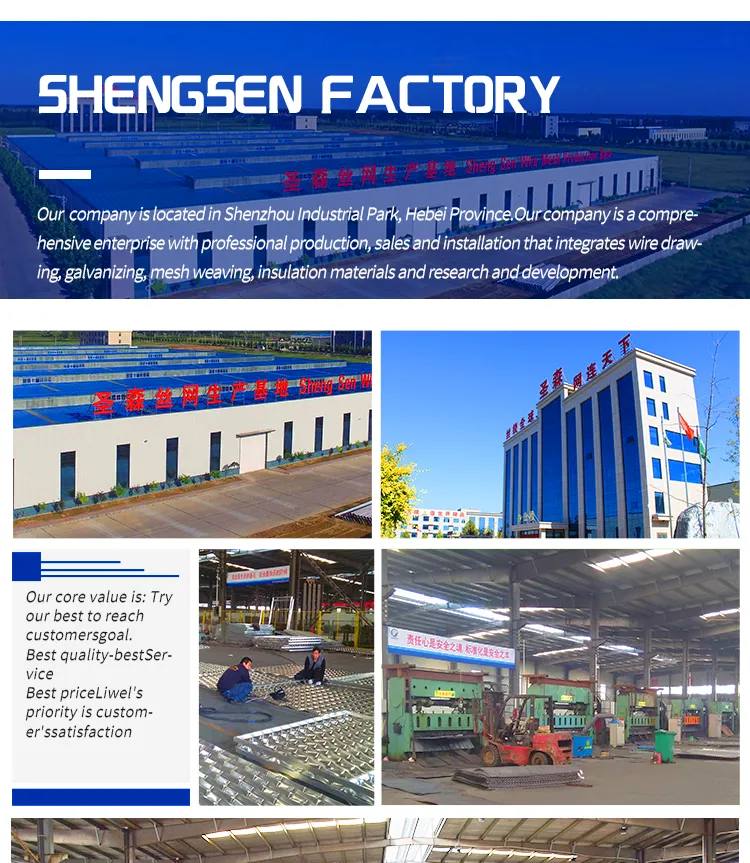-
 Phone:
Phone: -
 Email:
Email:

razor wire fence
The Role and Symbolism of Razor Wire Fences
Razor wire fences have become increasingly commonplace in various environments, serving a multitude of practical purposes. Their main function is to provide security and restrict access to sensitive areas, but they also carry deeper meanings and implications that extend beyond mere physical barriers. This article will explore the characteristics, uses, and symbolic connotations of razor wire fences.
Characteristics of Razor Wire Fences
Razor wire, engineered from sharp steel blades, is designed to be both an effective deterrent and a highly visible obstacle. Typically spiraled and installed atop a chain-link fence, razor wire is optimized for maximum security. Its sharp edges create a formidable barrier, making it challenging for unauthorized individuals to climb over. The sight of razor wire often invokes a sense of foreboding, emphasizing the seriousness of the security measures in place.
Installation of razor wire is relatively straightforward, making it a practical choice for various settings. Common locations include military installations, prisons, airports, and high-security properties like data centers. The visual impact of razor wire is significant; it serves as a clear message that trespassing is not only unwelcome but could also result in injury to those who attempt to breach the perimeter.
Uses of Razor Wire Fences
The most prevalent use of razor wire fences is in correctional facilities, where safety is paramount. These fences prevent inmates from escaping and help maintain order within the institution. The psychological effect of seeing razor wire can deter both current inmates from attempting to escape and potential intruders from trying to breach the facility.
In military applications, razor wire is used to secure bases and strategic locations. It acts as a first line of defense against intruders, helping to protect sensitive information and resources. During times of conflict, razor wire can be quickly deployed in various formations to establish perimeter security.
razor wire fence

Razor wire fences are also used in residential settings, particularly in areas plagued by high crime rates. Homeowners may install them to deter burglars or vandals, knowing that the potential for injury may dissuade individuals from attempting to breach their property. In this context, the fences serve not only as physical barriers but also as psychological ones, reinforcing the idea that the home is a fortress.
Symbolic Connotations
Beyond their practical uses, razor wire fences carry strong symbolic implications. They can represent the boundaries of freedom and entrapment. For many, encountering razor wire conjures images of confinement and oppression. In political contexts, such as refugee camps or militarized borders, razor wire fences symbolize the harsh realities of controlled movement and restricted opportunities.
Furthermore, razor wire can evoke a sense of fear and mistrust. It stands as a visual representation of society's desire for protection against perceived threats, whether real or imagined. This can lead to a cycle of isolation, where individuals or communities feel compelled to erect barriers that ultimately foster division rather than unity.
Conversely, razor wire fences can also symbolize resilience. For those who overcome these barriers, whether physically or metaphorically, they can represent triumph over adversity. The ability to navigate around or through such challenges can inspire narratives of strength and perseverance.
Conclusion
Razor wire fences serve numerous purposes in our society, particularly in terms of security and deterrence. However, it is essential to understand the deeper implications tied to these structures. While they provide protection and help maintain order, they also raise significant questions about freedom, trust, and societal values. As we continue to encounter these barriers in various contexts, we must reflect on what they signify—not only in terms of physical security but also regarding the broader human experience. The duality of razor wire fences as both protectors and prisoners invites a nuanced dialogue about safety, autonomy, and the complexities of contemporary life.
-
Wire Mesh for Every Need: A Practical SolutionNewsJul.25,2025
-
Steel Fences: Durable, Secure, and Stylish OptionsNewsJul.25,2025
-
Roll Top Fencing: A Smart Solution for Safety and SecurityNewsJul.25,2025
-
Cattle Farm Fencing Solutions for Maximum SecurityNewsJul.25,2025
-
Affordable Iron Binding Wire SolutionsNewsJul.25,2025
-
Affordable Galvanized Wire SolutionsNewsJul.25,2025
-
Wire Hanger Recycling IdeasNewsJul.25,2025








